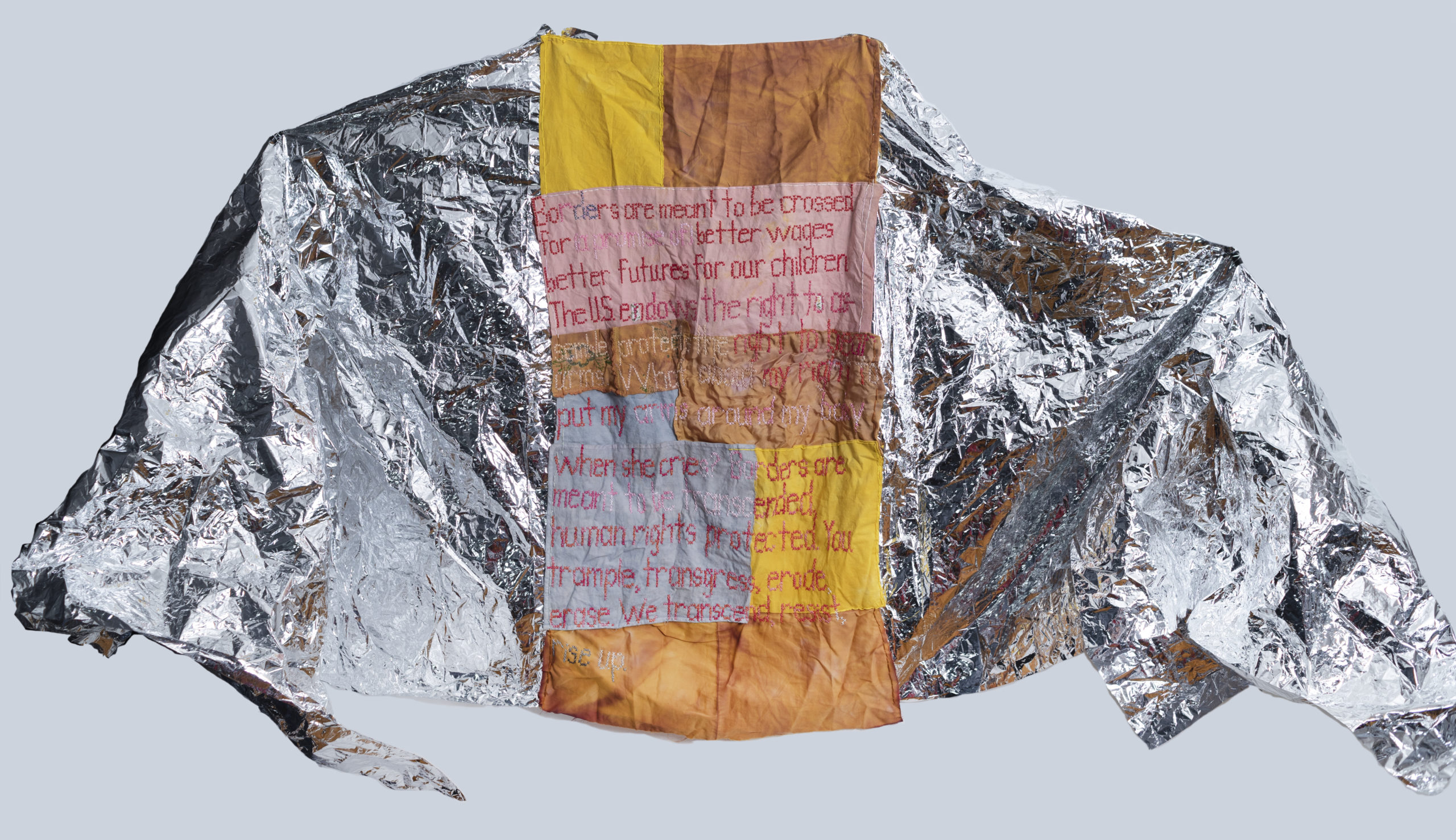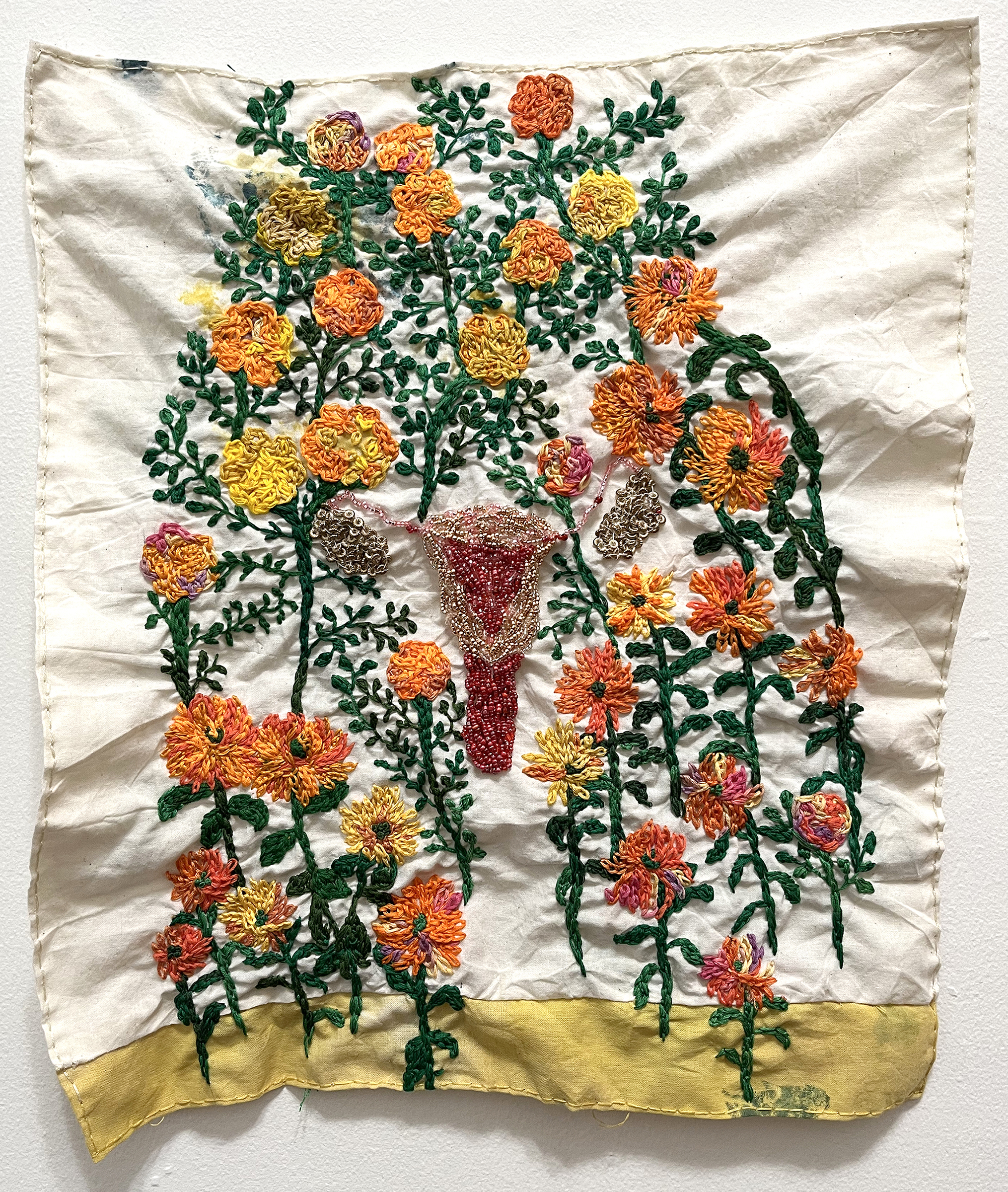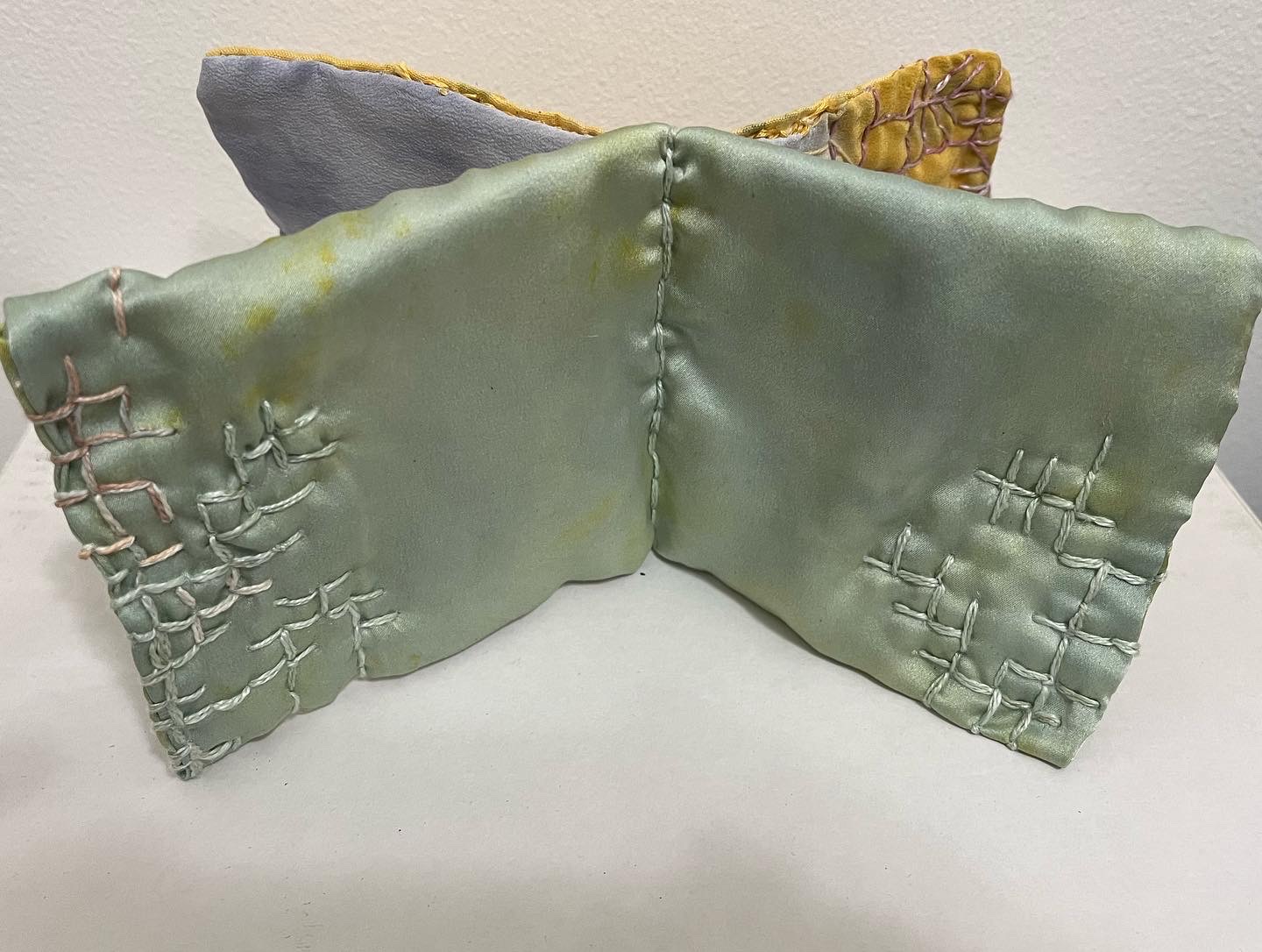Event Info
This one-day, virtual workshop takes place on Zoom on Wednesday, November 16, from 6–8pm Eastern time.
- Wednesday, November 16, 6:00–8:00 ET
Please Note: Registration for this workshop closes on November 9, at 11:59pm.
About the Workshop:
This virtual class at Center for Book Arts is taught by instructor Iviva Olenick.
Required Materials:
Required Materials:
-
Un-dyed Silk or Cotton fabric for dyeing
-
A pot designated for dyeing, not to be used for cooking anything you will ingest.
-
Soda ash (1 lb quantity) to scour or wash fabric
-
Alum (1 lb quantity) to use as a mordant
-
Undyed rubber bands or undyed string
-
A piece of aluminum foil poked with a fork to create small holes. Piece needs to be big enough to fit over your dye pot. This will be used to steam the fabric.
-
A water source or sink.
-
A small hammer or mallet if you want to try petal and leaf printing/pounding.
-
Food scraps – This can include avocado skins and pits, washed and dried; onion skins; frozen or fresh berries; purple cabbage; beets; turmeric; black beans.
- Flowers: The following plants can be used safely:
-
- Comfrey: produces a yellowish-green
- Sunflowers: heads produce blackish-purple
- Goldenrod: makes yellow
- Queen Anne’s Lace: makes ivory-yellow
- Hibiscus: color of dye depends on color of flowers
- Other Plant matter to look for outside: acorns, black walnuts, purpleleaf sand cherry tree leaves (makes a pinkish-purple), eucalyptus
- Optional: Baking soda and white vinegar. These will shift the Ph of a dye vat and change the color of the resulting dye for purple cabbage and avocado pits and skins.
- Dissolve some soda ash in boiling water and let the fabric simmer in the bath for 30 minutes. Dispose of the waste water. Ring out fabric and let dry.
- Dissolve several TBs of alum in boiling water. Allow fabric to simmer in the bath for 45 minutes or longer. Dispose of waste water and ring out fabric gently.
- https://www.dharmatrading.com/chemicals/soda-ash-fixer.html
- https://www.dharmatrading.com/chemicals/alum.html
About Iviva Olenick
Iviva Olenick is a Brooklyn-based artist developing textiles from seed to fiber and dye and using textiles as texts. Her work has been exhibited all over the United States, including the Philadelphia Museum of Art; Museum of Design Atlanta; the Hunterdon Museum, NJ; Sugar Hill Children’s Museum of Art & Storytelling, NYC; the Center for Book Arts, NYC; the Old Stone House, Brooklyn; Wyckoff House Museum, Brooklyn. Olenick is a faculty member of SVA’s MFA Art Practice program where she teaches Fibers. In addition, she gives artist talks and designs intensive textile-based workshops for museums and universities.
All images courtesy of the instructor.
In order to best serve our community near and far, many of our online classes are pay-what-you-can. The amount you choose to pay goes directly toward our instructors and toward creating scholarship opportunities for the future.




